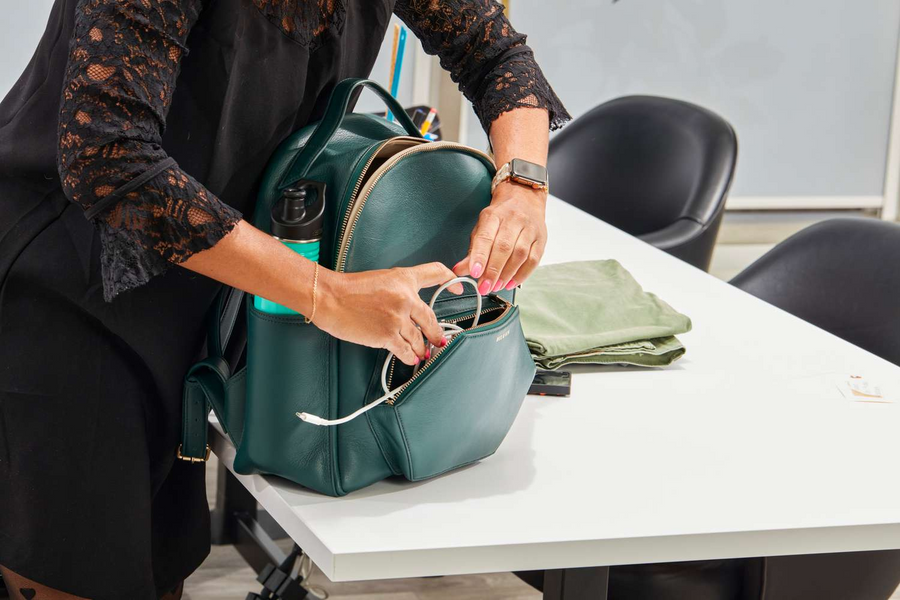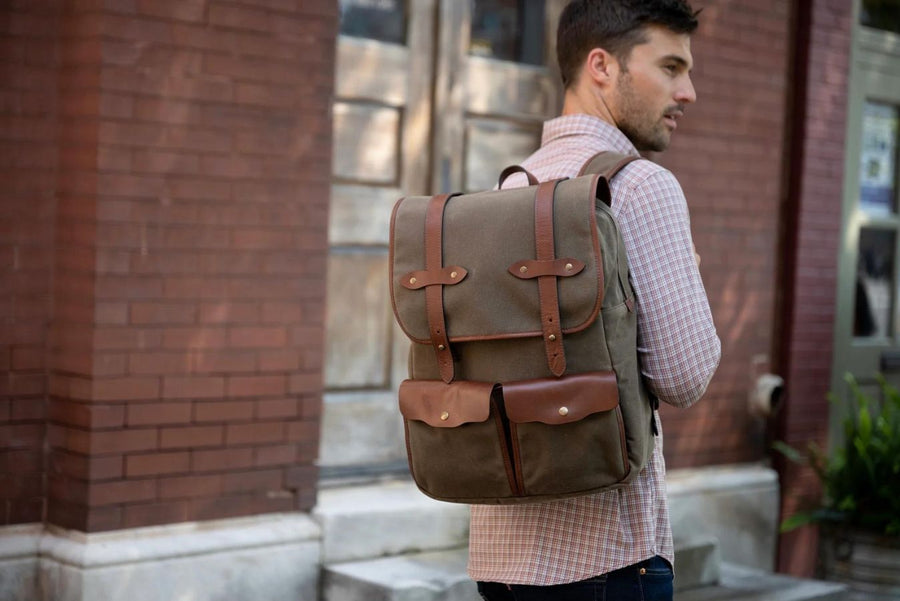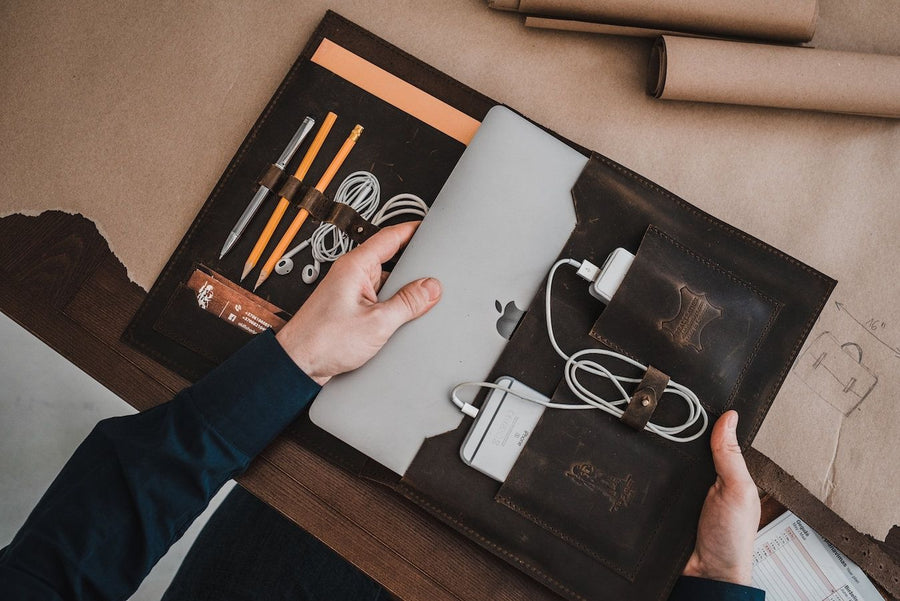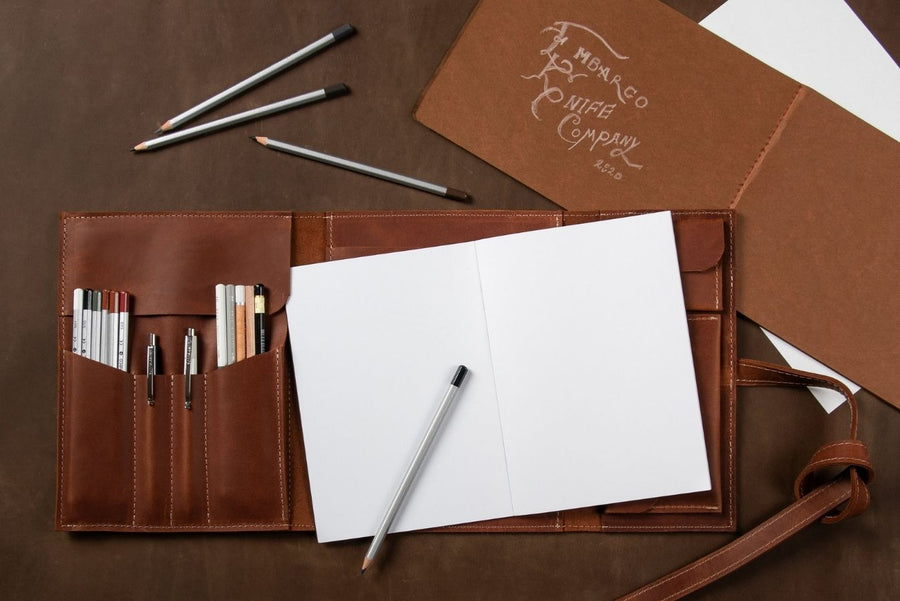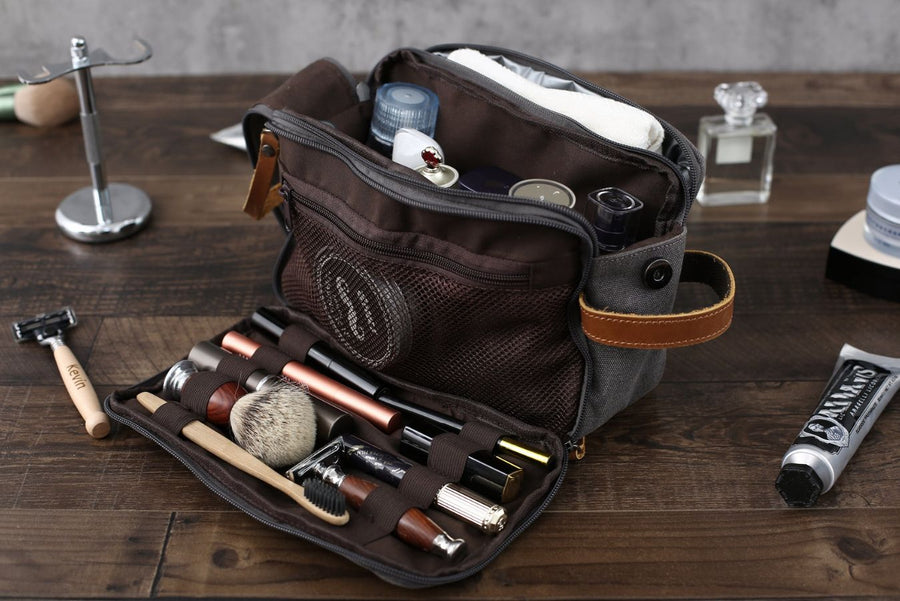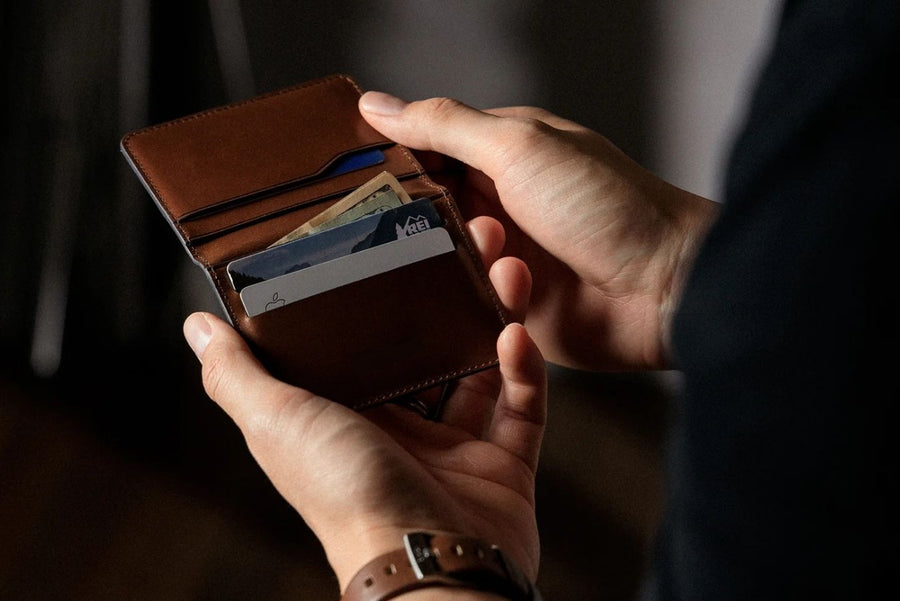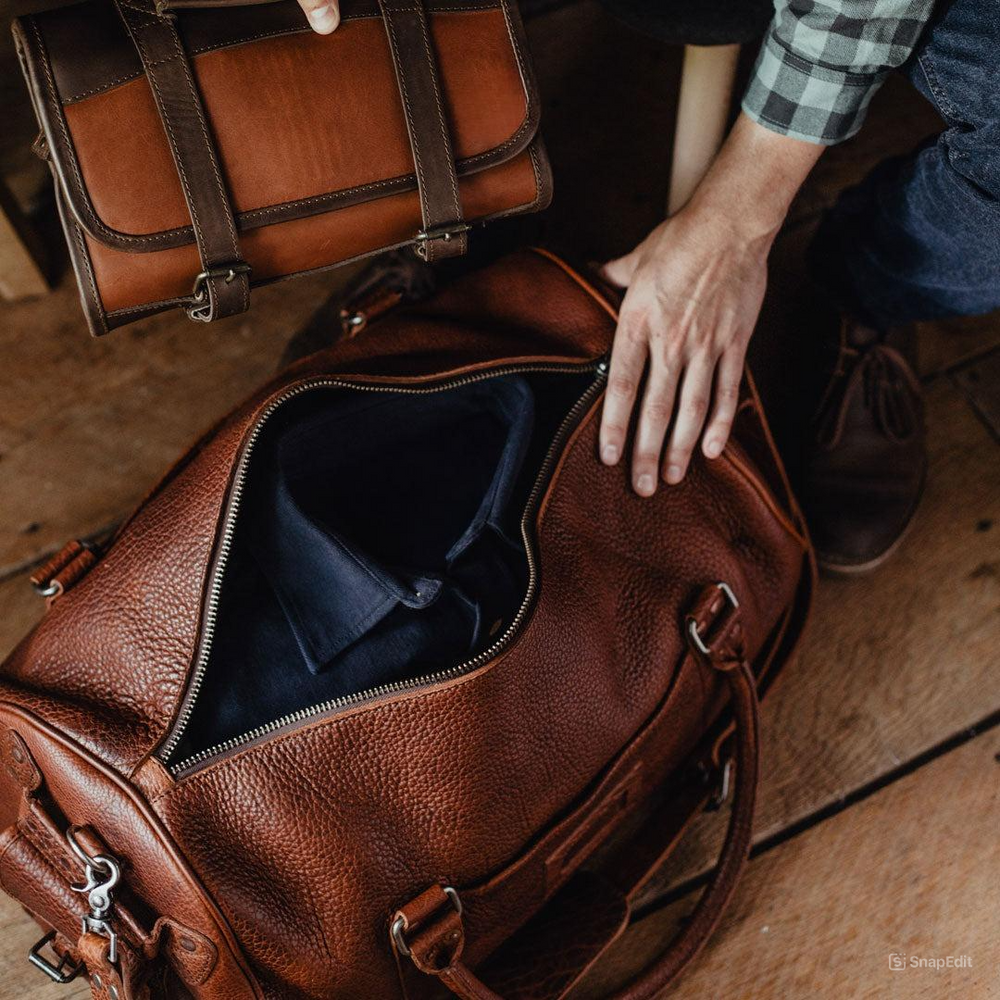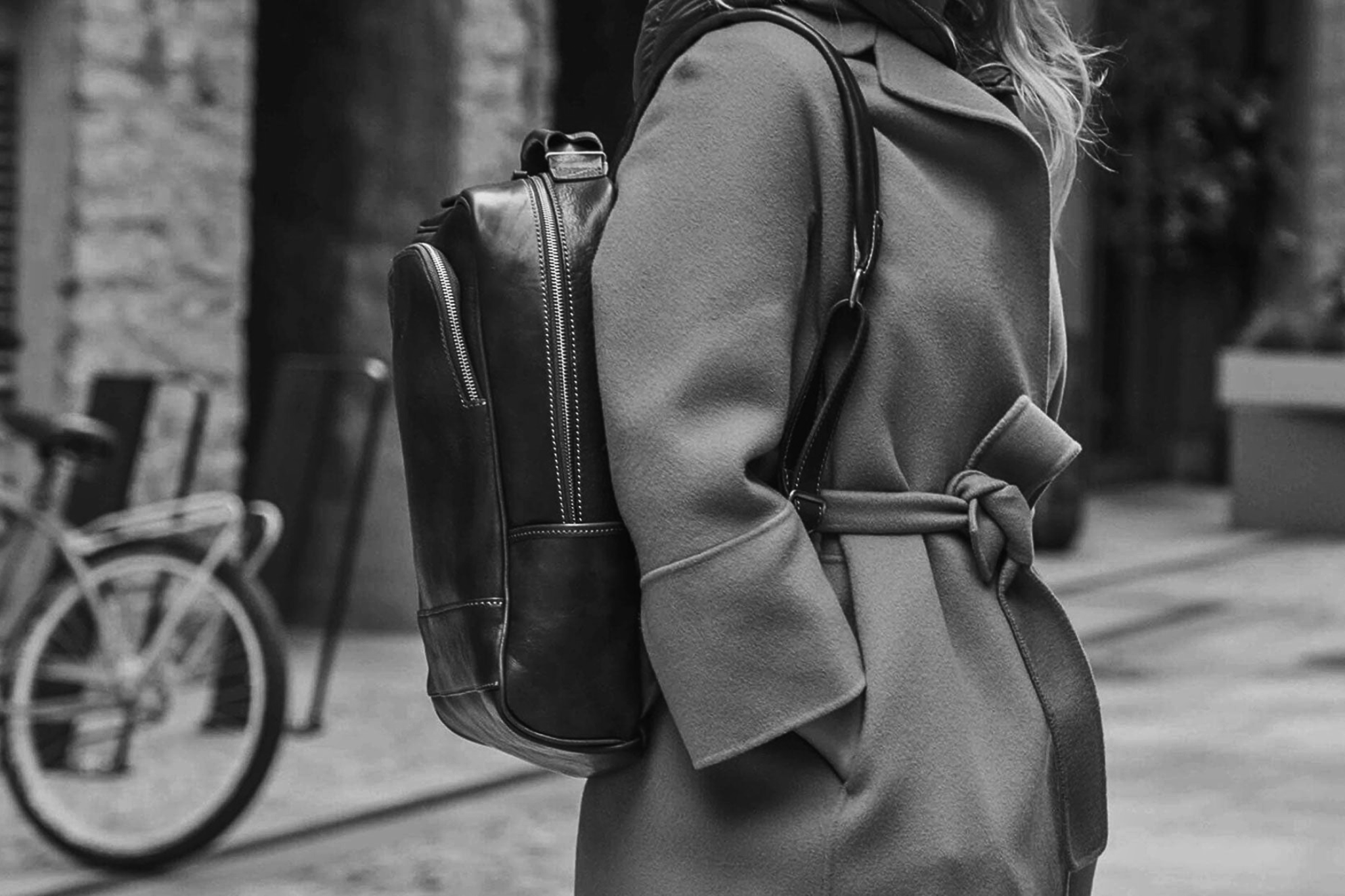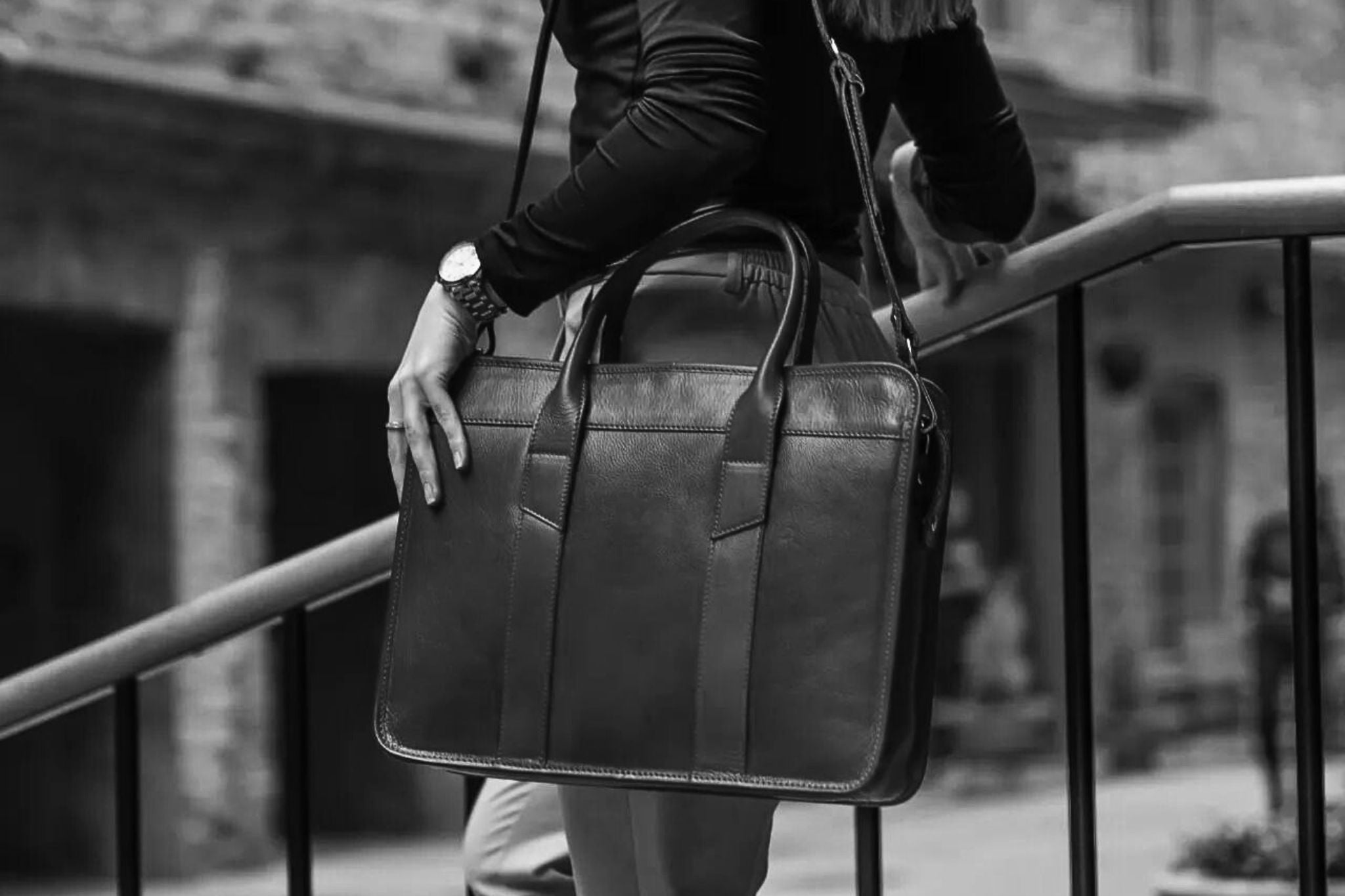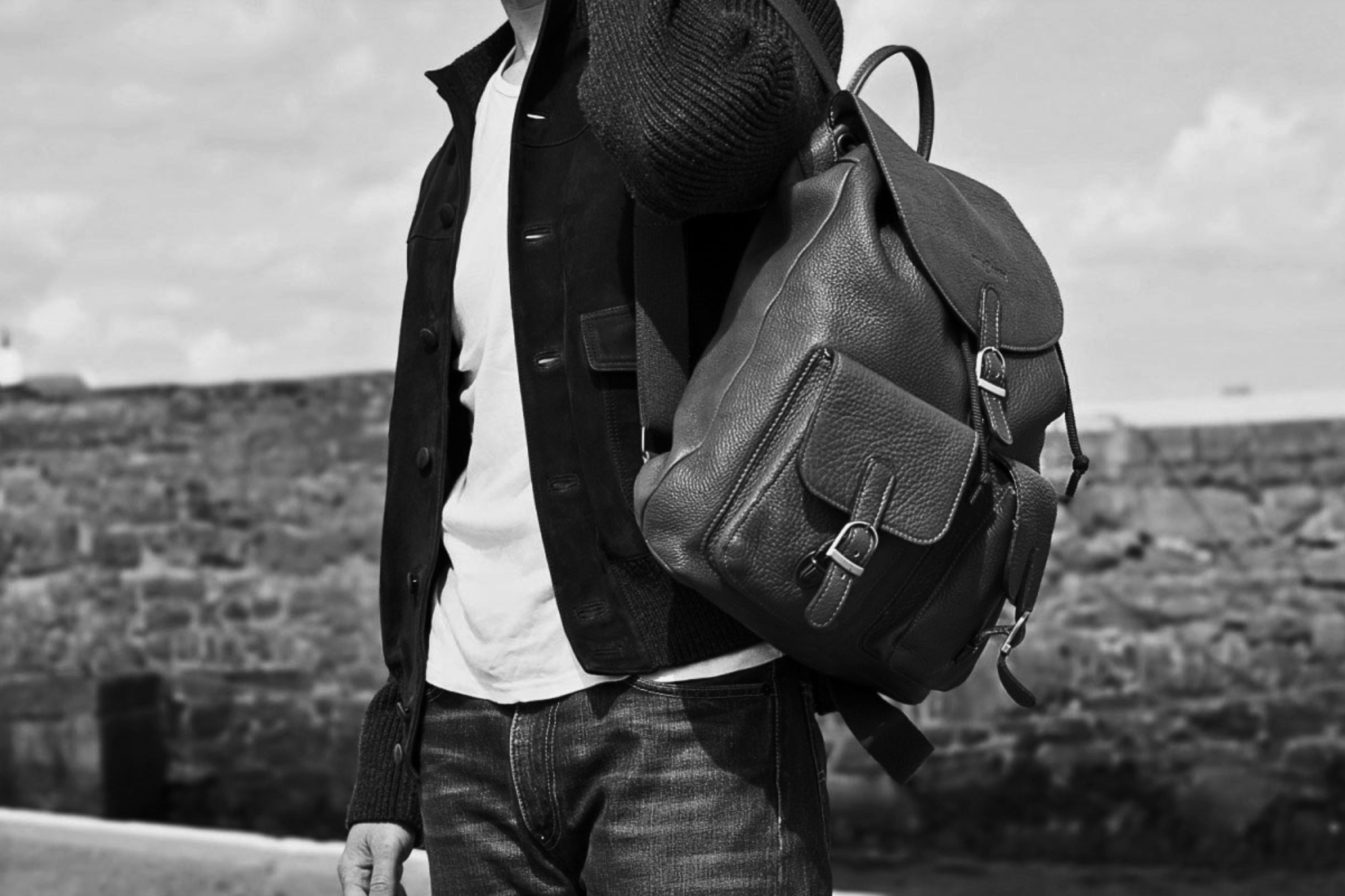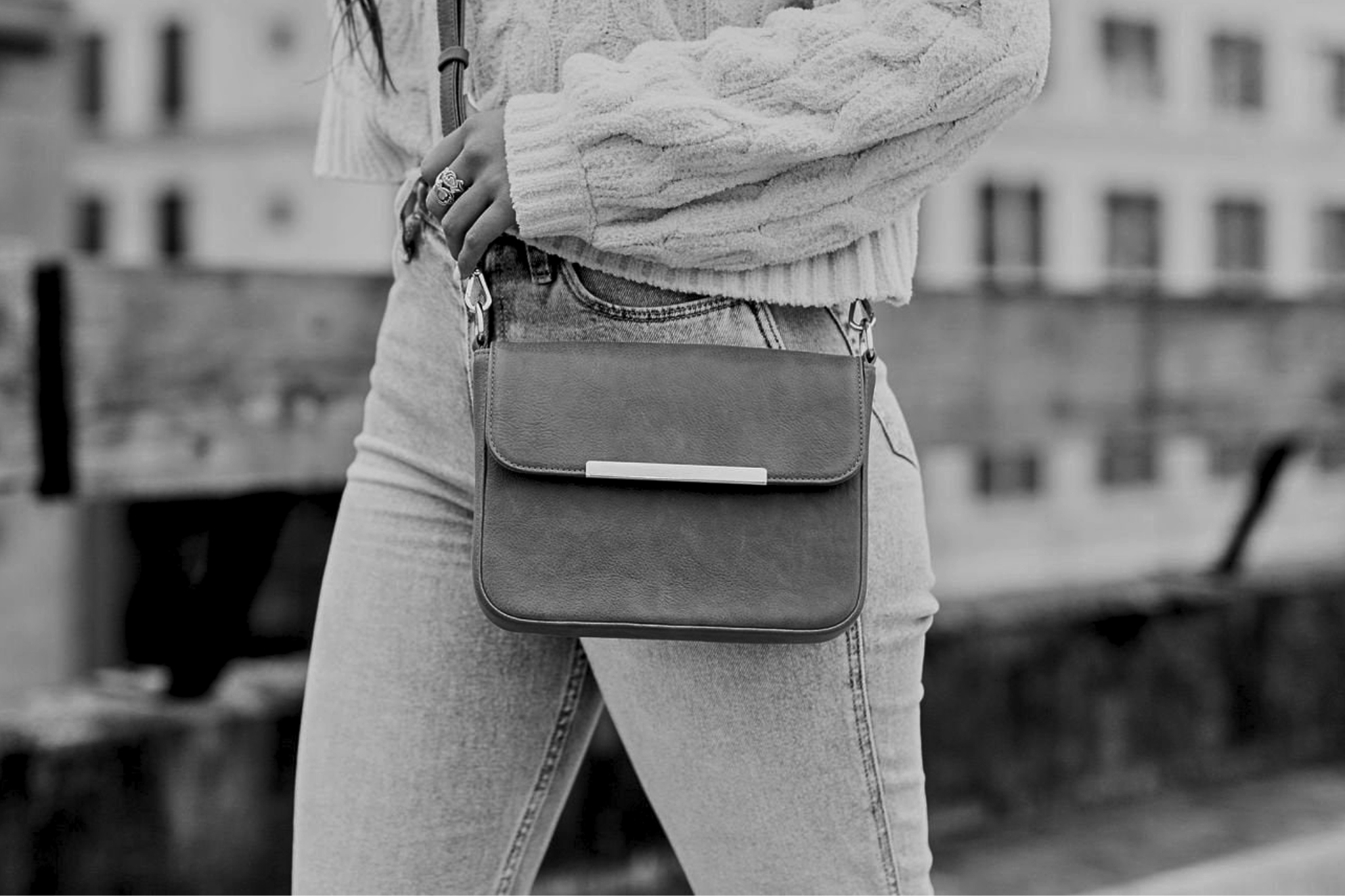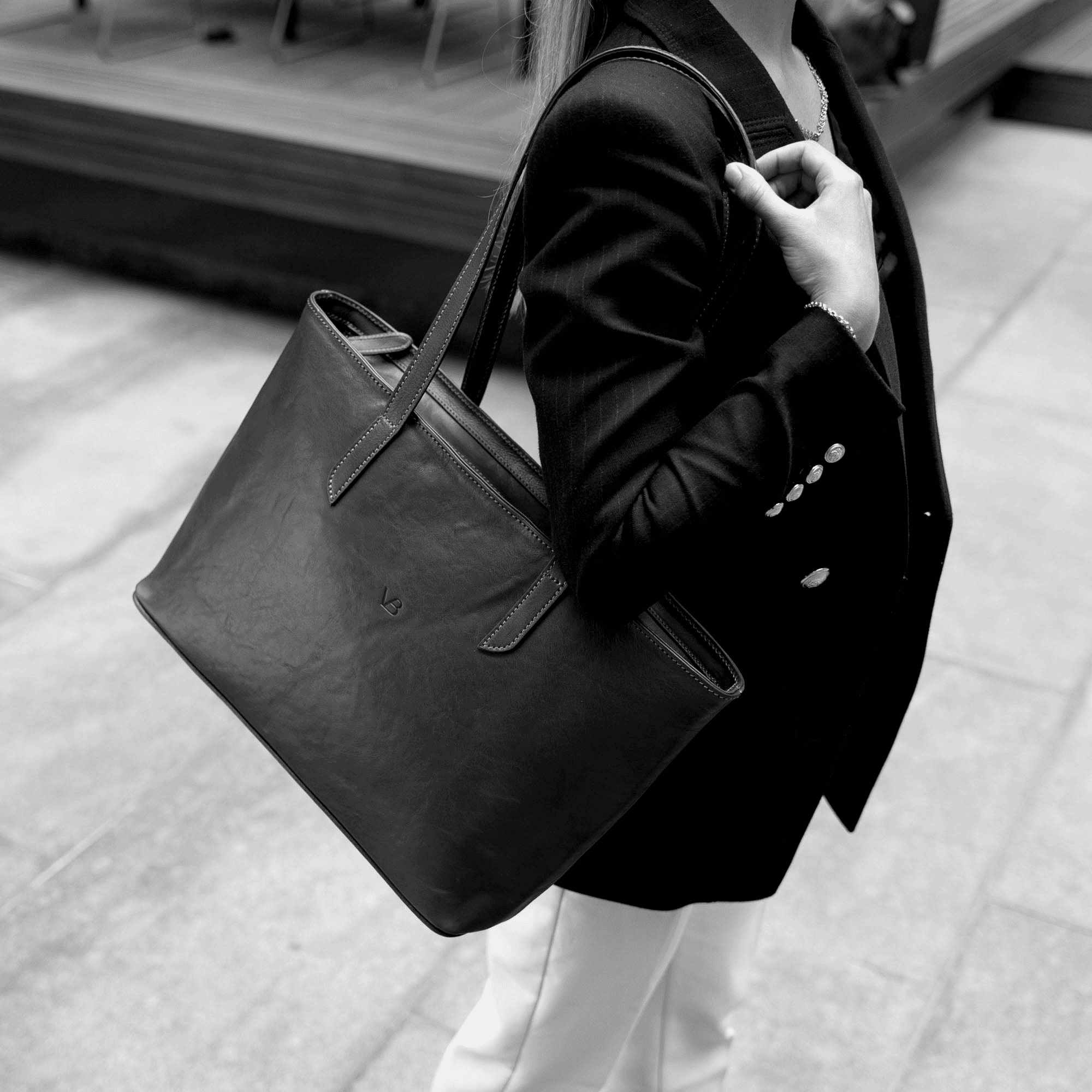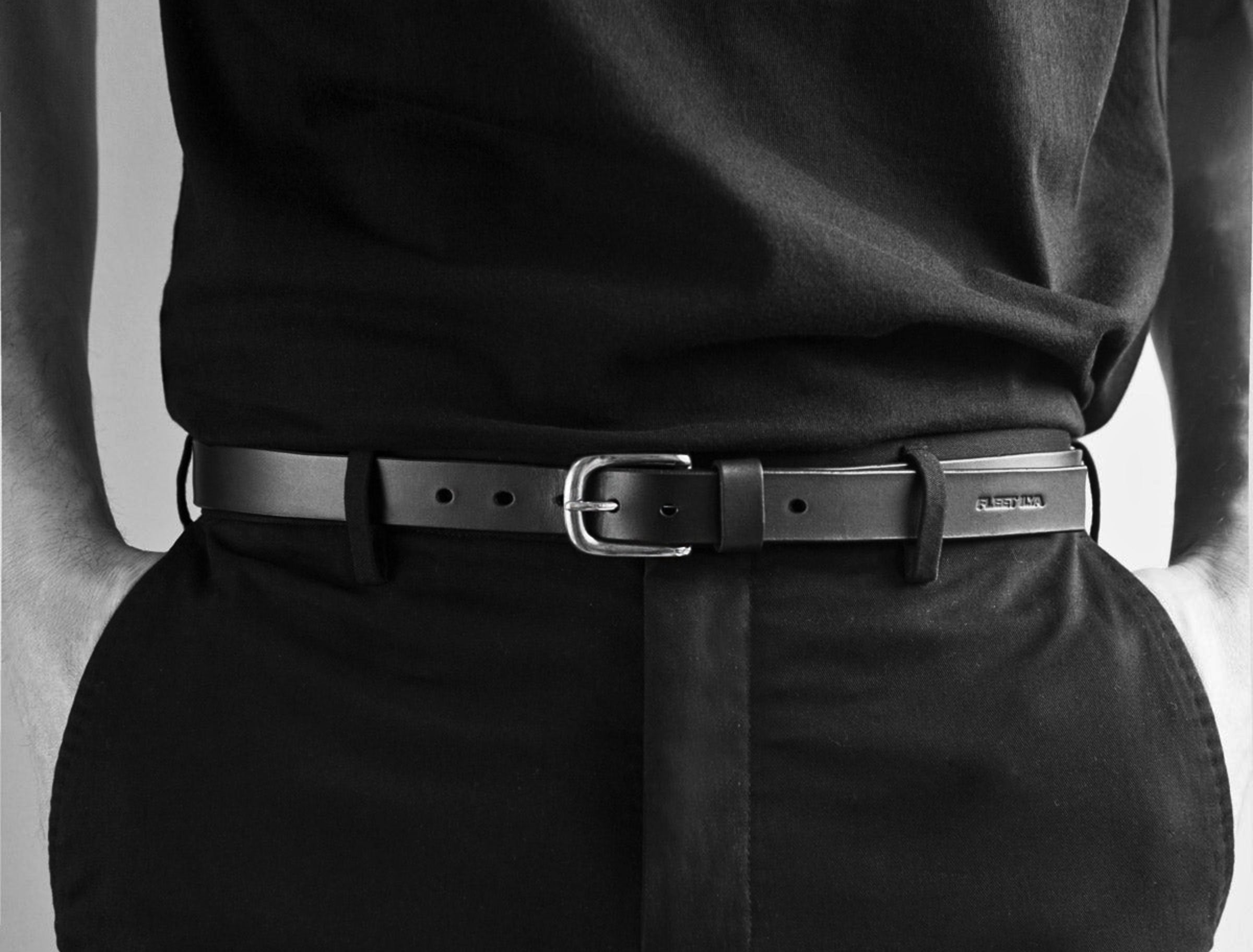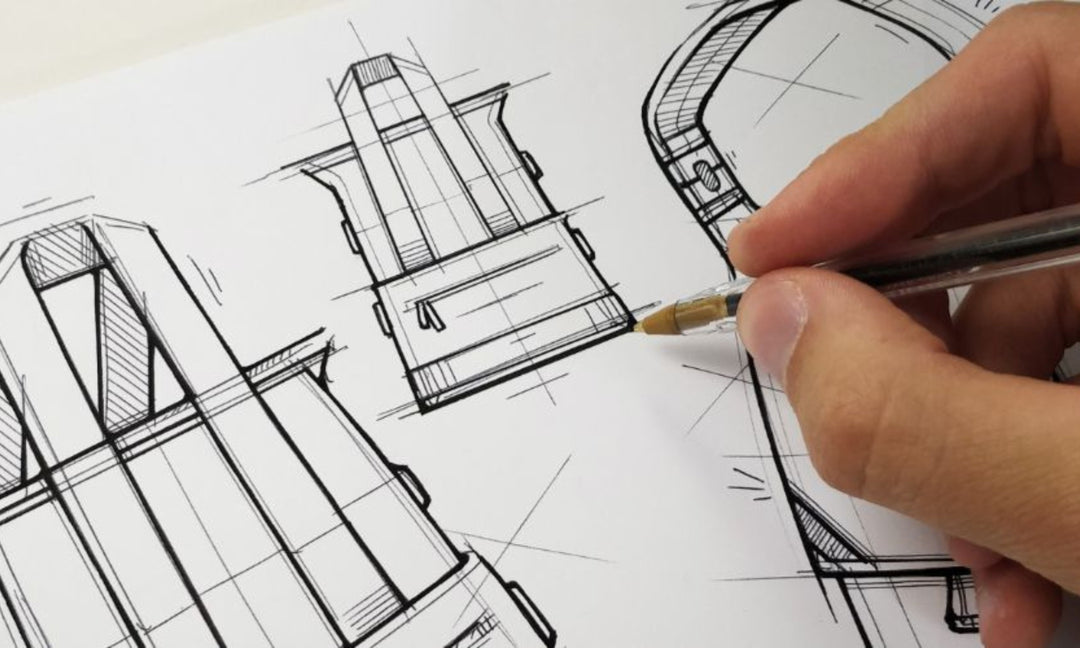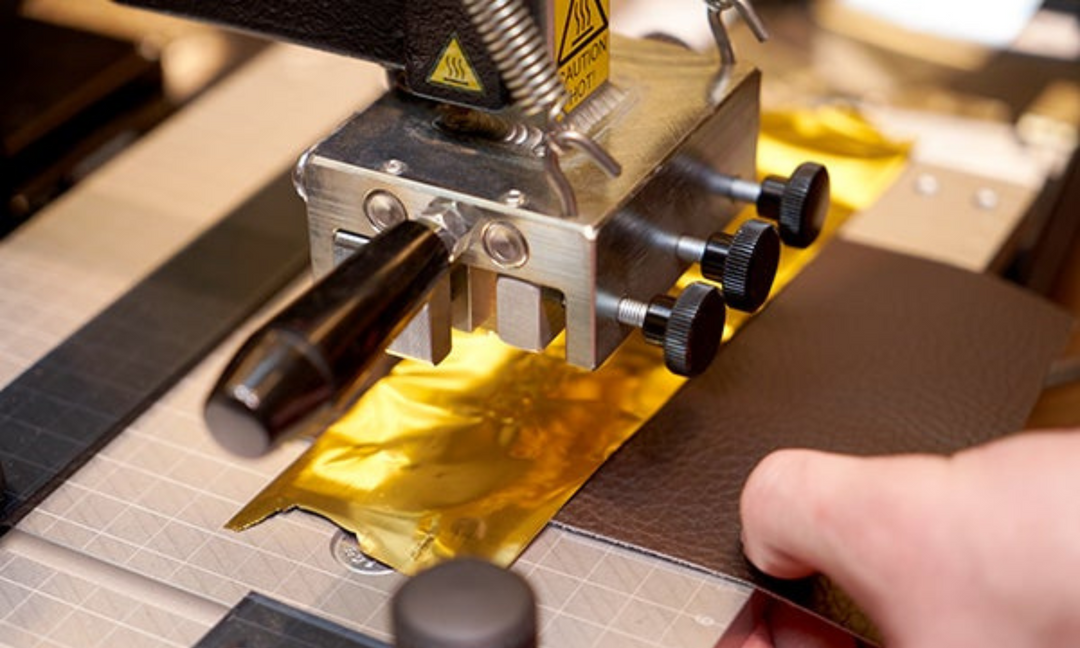Handcrafted vs. mass-produced: the art of making leather tote bags

Handcrafted vs. mass-produced: the art of making leather tote bags
Introduction
Fashion icon revisited
The allure of leather
Functionality redefined
Sustainable fashion
Versatility beyond compare
The office essential
Casual chic
Travel companion
Sustainable shopping

Understanding leather tote bags
Definition and types
1. Defining leather tote bags
2. Types of leather tote bags
Classic leather totes
Structured leather totes
Slouchy leather totes
Tote with pockets
Designer leather totes
Historical significance
1. Origins in utility
2. Evolving fashion accessory
3. Iconic moments
Modern-day relevance
1. Fashion meets functionality
2. Sustainability and ethics
3. Enduring popularity
The art of handcrafting
The craftsperson's toolkit
1. Leather
2. Cutting tools
3. Stitching supplies
4. Edge tools
5. Hole punches
Techniques and processes
1. Cutting and preparing leather
Pattern making
Leather selection
Cutting with precision
2. Stitching and assembling
Stitching techniques
Assembling components
Burnishing edges
3. Embellishments and personalization
Tooling and stamping
Dyeing and coloring
Hardware attachment
The efficiency of mass production
Industrial techniques
1. Machinery and automation
Precision and speed
Consistency and quality control
Cost savings
2. Materials and cost efficiency
Economies of scale
Standardization
Waste reduction
Environmental considerations
1. Sustainable practices
Resource efficiency
Recycling and repurposing
2. Carbon footprint reduction
Green technologies
Transportation efficiency
3. Regulatory compliance
Quality and durability
Handcrafted tote bags
1. Attention to detail
Customization
Hand-stitched perfection
Premium materials
2. Materials selection
Durability
Sustainability
Mass-produced tote bags
1. Standardization vs. craftsmanship
Consistency
Efficient manufacturing
2. Longevity and quality control
Quality assurance
Modern materials
Aesthetics and design
Handcrafted elegance
1. Artisanal touch
2. Personalization
3. Timeless design
Mass-produced variety
1. Diverse styles
2. Affordability
3. Trend responsiveness
Trends and consumer preferences
1. Trend-driven designs
2. Ethical considerations
3. Versatility
Pros and cons
Handcrafted tote bags
Pros:
-
Unique and artistic: Handcrafted tote bags are one-of-a-kind pieces of art. They bear the artisan's personal touch, making them unique and often appreciated as functional artworks.
-
Attention to detail: Craftspersons pay meticulous attention to detail, ensuring that each bag is impeccably crafted. This results in high-quality products with durable seams and superior stitching.
-
Customization: Handcrafted bags often offer a high degree of customization. Customers can choose the type of leather, color, design, and even personalized embellishments to suit their individual preferences.
-
Timeless design: Handcrafted tote bags typically feature timeless and classic designs that transcend fashion trends, making them versatile for various occasions and outfits.
-
Sustainability: Many handcrafters prioritize eco-friendly practices by using ethically sourced materials and sustainable production methods, aligning with the growing demand for responsible consumer choices.
Cons:
-
Higher cost: The level of craftsmanship and customization in handcrafted bags often comes at a premium price. Handcrafted tote bags tend to be more expensive than their mass-produced counterparts.
-
Limited availability: Since each handcrafted bag is unique, there may be limited availability of specific designs or materials. This can make it challenging to find the exact bag you desire.
-
Longer production time: Crafting each bag by hand is a time-consuming process. Customers may need to wait longer to receive their customized handcrafted tote.
Mass-produced tote bags
Pros:
-
Variety and accessibility: Mass-produced tote bags offer a wide variety of styles, catering to diverse tastes and preferences. They are accessible to a broader audience due to their affordability.
-
Affordability: Mass production often results in lower price points, making fashionable tote bags accessible to consumers with different budget constraints.
-
Trend responsiveness: Mass-produced bags can quickly respond to changing fashion trends, ensuring that consumers have access to current styles and designs.
-
Consistency: Mass production processes prioritize consistency in design and quality. Customers can expect the same look and quality across bags within a product line.
Cons:
-
Lack of uniqueness: Mass-produced tote bags lack the uniqueness and personal touch found in handcrafted pieces. They may not offer the same level of individuality and customization.
-
Quality variations: While quality control measures are in place, mass-produced items can sometimes exhibit variations in stitching or materials, which may affect their overall durability.
-
Trend dependency: Mass-produced bags often follow fashion trends closely. This can lead to a shorter lifespan for a bag's style, making it less suitable for those seeking timeless pieces.
-
Environmental concerns: Mass production may not always prioritize sustainable or ethical practices, which can be a concern for environmentally conscious consumers.
Choosing the perfect tote bag
Decision-making guide
1. Purpose
2. Size and capacity
3. Material
4. Design and style
5. Customization
6. Durability
7. Comfort and straps
8. Pockets and compartments
9. Price
Customization options
1. Color
2. Monogramming
3. Embellishments
4. Size and shape
5. Material preferences
6. Additional features

Maintenance and care
Handcrafted bags
1. Cleaning:
-
Regular cleaning: Wipe the bag with a damp, soft cloth to remove dust and dirt. For leather bags, use a leather cleaner or conditioner recommended by the manufacturer to maintain its suppleness and shine.
-
Spot cleaning: Address stains promptly. Gently blot the stain with a clean cloth and mild soap or a specialized stain remover suitable for the bag's material. Avoid scrubbing vigorously to prevent damage.
2. Storage:
-
Dust bag: When not in use, store your handcrafted tote bag in a dust bag or a pillowcase to protect it from dust and light exposure.
-
Stuffing: To maintain the bag's shape, stuff it with acid-free tissue paper or a soft cloth when not in use, especially if it's made of delicate materials.
3. Protection:
-
Waterproofing: If your tote bag is not water-resistant, consider applying a waterproof spray to shield it from moisture. Be sure to test the product on a small, inconspicuous area first.
-
Avoid overloading: To prevent stretching or distortion, avoid overloading the bag with heavy items beyond its capacity.
4. Maintenance:
-
Leather care: For leather tote bags, periodically apply a leather conditioner to nourish the material and maintain its luster. Use a soft brush to remove loose dirt and restore the leather's shine.
-
Hardware: Check and tighten any loose hardware, such as zippers or clasps, to prevent them from causing damage.
Mass-produced bags
1. Cleaning:
-
Regular cleaning: Similar to handcrafted bags, clean mass-produced tote bags with a damp, soft cloth. Use mild soap or a gentle fabric cleaner to remove stains.
-
Machine washable: Some mass-produced fabric tote bags may be machine washable. Follow the care instructions on the bag's label for best results.
2. Storage:
-
Clean and dry: Ensure the bag is clean and completely dry before storing it. Moisture can lead to mold and mildew growth.
-
Air circulation: Store the bag in a well-ventilated area to prevent musty odors.
3. Protection:
-
Avoid sharp objects: Be cautious with sharp or abrasive objects that could scratch or puncture the bag's material.
-
Color transfer: Be mindful of color transfer, especially with light-colored bags. Avoid contact with items that may bleed color onto the bag.
4. Maintenance:
-
Inspect seams: Periodically check the seams and stitching for any loose threads or signs of wear. Repair any issues promptly to prevent further damage.
-
Zippers and snaps: Keep zippers and snaps lubricated with a small amount of silicone or paraffin wax to ensure smooth operation.
Conclusion
Recap of key points
Handcrafted tote bags
- Unique and artistic: Handcrafted tote bags are one-of-a-kind pieces of art, bearing the artisan's personal touch.
- Customization: These bags offer a high degree of customization, allowing you to tailor the bag to your specific preferences.
- Attention to detail: Meticulous craftsmanship and attention to detail result in durable, high-quality products.
- Timeless design: Handcrafted tote bags often feature timeless designs that transcend fashion trends.
- Sustainability: Many artisans prioritize eco-friendly practices, using ethically sourced materials and sustainable production methods.
Mass-produced tote bags
- Variety and accessibility: Mass-produced tote bags offer a wide range of styles, making fashionable options accessible to a broad audience.
- Affordability: These bags are often more budget-friendly, allowing consumers to experiment with different styles.
- Trend responsiveness: Mass-produced bags can quickly adapt to changing fashion trends, offering up-to-date styles.
- Consistency: Quality control processes ensure a consistent design and quality across bags within a product line.
Making an informed choice
-
Purpose: Determine the primary purpose of the tote bag, whether it's for everyday use, fashion, work, or travel.
-
Size and capacity: Choose a size that accommodates your daily essentials without being too bulky.
-
Material: Select a material that aligns with your style and values, such as leather for durability, canvas for a casual look, or eco-friendly options for sustainability.
-
Design and style: Pick a style that reflects your personal taste and complements your wardrobe.
-
Customization: Decide whether you desire a customized tote bag to express your individuality. Explore customization options such as color, monogramming, embellishments, and material preferences.
-
Durability: Assess the bag's durability, especially if you plan to use it regularly. Look for quality stitching, reliable closures, and resilient materials.
-
Comfort and straps: Consider how you'll carry the bag and choose straps or handles that suit your preferences.
-
Pockets and compartments: Evaluate the bag's interior organization to help keep your belongings organized.
-
Price: Set a budget that aligns with your financial constraints, as tote bags come in various price ranges.
FAQs (Frequently Asked Questions)
A. What distinguishes handcrafted leather tote bags from mass-produced ones?
-
Unique artistry: Handcrafted bags bear the personal touch of skilled artisans, resulting in unique and individual pieces of art.
-
Attention to detail: Craftsmen pay meticulous attention to detail, ensuring superior stitching, durability, and quality.
-
Customization: Handcrafted bags often offer a high degree of customization, allowing customers to choose materials, colors, designs, and even personalized embellishments.
-
Timeless design: These bags often feature timeless designs that transcend fashion trends, making them versatile and enduring.
-
Sustainability: Many handcrafted leather tote bags prioritize eco-friendly practices, using ethically sourced materials and sustainable production methods.
B. Are handcrafted leather tote bags more expensive?
C. Are mass-produced leather tote bags eco-friendly?
D. How do I choose the right size for a tote bag?
-
Everyday use: For an everyday tote, select a size that comfortably accommodates your daily essentials, such as a wallet, phone, keys, and perhaps a tablet or a small laptop.
-
Work or travel: If you plan to use the tote for work or travel, consider a larger size that can hold documents, a laptop, or travel essentials.
-
Style and comfort: Additionally, consider your body size and personal style. A bag that complements your proportions and style preferences will not only be practical but also aesthetically pleasing.
